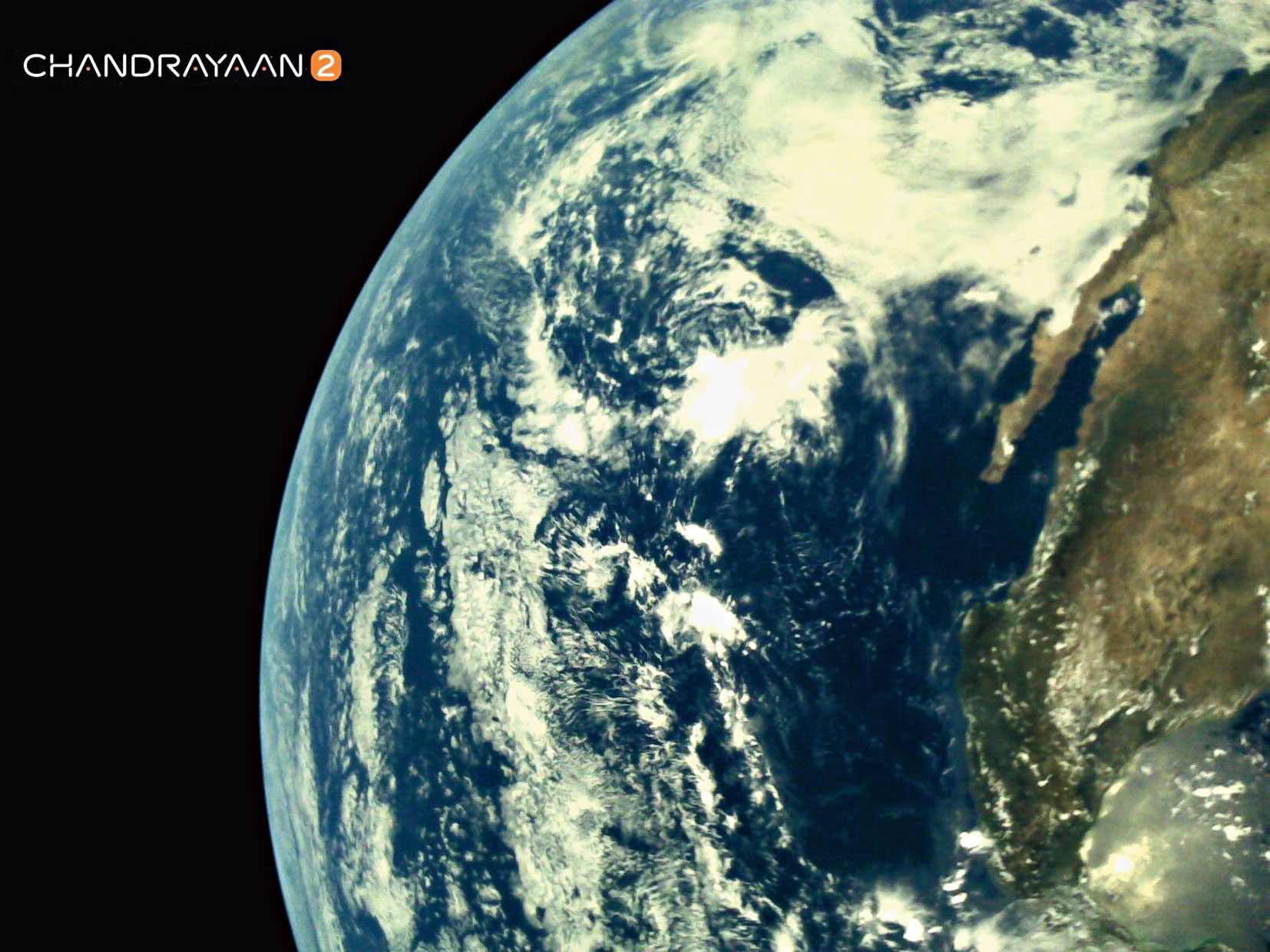India’s space agency on Sunday released the first set of pictures of Earth captured by a camera aboard the Moon-bound Chandrayaan-2 spacecraft still in orbit around the planet awaiting its next orbit-raising manoeuvre.
The Indian Space Research Organisation (Isro) released at least three pictures showing Earth from different perspectives, calling them “the first set of beautiful pictures of the Earth” from Chandrayaan-2.

The Rs 978-crore Chandrayaan-2 mission is intended to make India the fourth country to soft land a spacecraft on the Moon after the former Soviet Union, the US and China. (Picture: Isro)
The spacecraft, launched on July 22, is intended to be the first from India to soft-land on the Moon and deploy a rover to explore a hitherto unexplored region near the lunar South Pole.
Since its launch, engineers at Isro’s satellite tracking, telemetry and command centre in Bangalore have been raising its orbit through planned short-lasting firings of an onboard thruster that will take the spacecraft closer and closer to the Moon.
The spacecraft has had four such orbit-raising manoeuvres. During the fourth firing on Friday, the thruster was activated for 646 seconds to achieve an orbit in which its nearest point to Earth is 277km and its farthest point is 89,472km.

India’s first lunar mission, an orbiter named Chandrayaan-1, had in 2008 detected signatures of water molecules on the Moon. (Picture: Isro)
The next orbit-raising firing is scheduled for August 6 between 2.30pm and 4.30pm, Isro has said.
The Chandrayaan-2 orbiter, lander and rover carry multiple scientific instruments that scientists are hoping to use to remotely study the Moon’s mineral makeup and look for water ice, among other scientific objectives.
India’s first lunar mission, an orbiter named Chandrayaan-1, had in 2008 detected signatures of water molecules on the Moon.
The Rs 978-crore Chandrayaan-2 mission is intended to make India the fourth country to soft land a spacecraft on the Moon after the former Soviet Union, the US and China.










